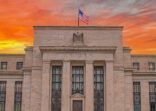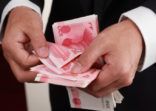One of the promises of multi-asset funds is to enable investors to participate in equity markets but minimise downside risk with a portion of their money invested in fixed income instruments.
The case may be true for global portfolios, but it may be different when investing in Chinese instruments, according to Rob Worthington, Hong Kong-based managing director and Asia-Pacific head of investment solutions specialists.

“If you look at big global portfolios, you have your stocks, which is your risk asset, and then your bonds, which [in theory] reduces your risk.
“The uniqueness in the market in China is that while equities are clearly a risk asset, bonds, too, are a risk asset. Both may sometimes be correlated with each other.”
This explains why the firm’s China Allocation Opportunity Fund allows its fund manager, Gian Plebani, to allocate up to 30% of its assets in cash. The product is a flexible multi-asset fund, in which both equity and bond allocations can go up to 65%.
“Cash is very important for a risk offensive,” Hong Kong-based Plebani told FSA.
Plebani is in charge of the overall asset allocation of the fund, while Chinese equity fund manager Bin Shi and Asia-Pacific fixed income fund manager Hayden Briscoe are in charge for the individual security selection.
More cash in 2018
In a neutral scenario, the fund, which does not have a benchmark index, invests 50/50 in Chinese equities and bonds, according to Plebani. The breakdown will be 40% in offshore and 10% in onshore equities, and the same with bonds.
However, as markets turned sour last year, the fund moved to an underweight in both assets and then had at least 20% of the portfolio in cash.
“Basically, both Chinese equities and bonds became really risky and we had the most negative view on the Chinese economy last year.”
Plebani explained that the Chinese economy was hit badly in 2018 as regulators reduced shadow banking activities.
“When your credit expansion is weakened, you are impacting the real economy, and you saw that coming through in early 2018.
“That, combined with the US-China trade war, was very negative for Chinese markets.”
In Hong Kong, all of the 14 China-focused multi-asset funds having at least a three-year track record had negative returns last year, according to data from FE Analytics. The sector average was around -17.77%.
Discreet annual calendar performance (%)
| Fund | 2019 YTD | 2018 | 2017 |
| FF Greater China Multi Asset Growth & Income in US |
6.77 |
-9.5 |
30.13 |
| BOCHK China Income TR in US |
3.45 |
-10.35 |
22.87 |
| UBS (Lux) Key Selection SICAV China Allocation Opportunity (USD) P Acc in US |
13.84 |
-10.7 |
25.84 |
| Schroder China Asset Income in US |
6.06 |
-10.95 |
25.02 |
| JPMorgan China Income in US |
7.6 |
-11.34 |
30.7 |
| BOCHK NCB China Balanced TR in US |
4.09 |
-12.14 |
26.15 |
| HSBC China Multi-Asset Income TR in US |
6 |
-12.45 |
31.06 |
| Allianz China Multi Income Plus in US |
10.37 |
-12.72 |
20.84 |
| Da Cheng China Balanced TR in US |
13.36 |
-19.85 |
31.32 |
| Franklin Sealand China Prospect Mixed Assets in US |
27.45 |
-21.74 |
25.18 |
| Zeal China Connect in US |
0.39 |
-25.96 |
35.49 |
| CSOP China Southern Selected Value Mixed Securities Investment TR in US |
19.51 |
-26.36 |
4.52 |
| Invesco Great Wall Core Competence Mixed Securities in US |
27.24 |
-30.18 |
56.37 |
| BOCOM International International China Dynamic in US |
13.82 |
-34.62 |
35.68 |
Source: FE Analytics. In US dollars. Note: Data only include SFC-registered China-focused multi-asset products with at least a three-year track record.
Back to neutral
Plebani decreased cash holdings by buying equities, especially during the fourth quarter of last year. As of end-April, cash levels were at 5% and the fund has gone back to neutral.
The buying was on the back of government stimulus measures, including tax reforms and bank cash reserve requirement cuts, according to Plebani.
“We anticipated that some economic improvement would happen in early 2019.”
However, he noted that the fund is still neutral, as he expects a slowing Chinese economy during the second and third quarter.
Asset allocation as of end-April
| Asset class |
% |
| Equities |
52.5 |
| Onshore equities |
9.6 |
| Chinese companies listed in Hong Kong |
25 |
| Hong Kong stocks |
2.1 |
| ADRs |
15.8 |
| Fixed income |
41.7 |
| USD credit |
37.1 |
| Onshore China bonds |
4.6 |
| Cash |
5.8 |
Source: Fund factsheet
“The investment from manufacturing companies has been disappointing, as some of them have not felt that the stimulus has started to help them. The stimulus needs more time to trickle throughout the economy, so that turnaround may come [at the second half or later] this year.”
In addition, the US-China trade war continues to be a key risk for Plebani.
“The trade war really is a wild card and it is really hard to say what the outcome will be.”
According to Plebani, UBS AM has built three different outcomes for the ongoing trade war: a 50% probability that there will be a trade agreement, 40% where the trade disagreement continues, although both parties are still committed to find an agreement but with no fixed date, and a 10% scenario in which both parties stop talking to each other.
Plebani noted that the G20 meeting next month is a key event that investors should monitor, as both the US and Chinese president will be attending the event.
“So there might be an opportunity to find an agreement.”
The UBS (Lux) Key Selection Sicav – China Allocation Opportunity Fund versus the Asia-Pacific mixed-asset sector

Source: FE Analytics. In US dollars. The fund does not use a benchmark.

















